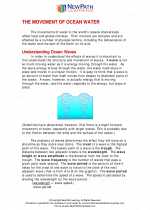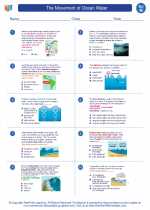Buoyancy: Explanation and Study Guide
What is Buoyancy?
Buoyancy is the upward force exerted by a fluid that opposes the weight of an immersed object. This phenomenon explains why objects float or sink in a fluid.
Understanding Buoyant Force
The buoyant force is equal to the weight of the fluid displaced by the immersed object. This force is dependent on the density of the fluid and the volume of the displaced fluid.
Archimedes' Principle
Archimedes' principle states that the buoyant force acting on an object is equal to the weight of the fluid displaced by the object. This principle helps explain why objects float or sink in a fluid.
Factors Affecting Buoyancy
Several factors influence the buoyancy of an object, including its density, the density of the fluid, and the volume of the object that is submerged in the fluid.
Applications of Buoyancy
Buoyancy has numerous practical applications, including ship design, submarine operation, and the functioning of hot air balloons. Understanding buoyancy is essential for designing objects that float or sink as intended.
Studying Buoyancy
To understand buoyancy better, it's essential to study the concepts of density, displaced volume of fluid, and Archimedes' principle. Practice problems involving buoyant force and object weight can also help reinforce the understanding of this topic.
Conclusion
Buoyancy is a fundamental concept in fluid mechanics and plays a crucial role in various real-world applications. By grasping the principles of buoyancy, one can better comprehend why objects behave the way they do in fluids.
.◂Science Worksheets and Study Guides Eighth Grade. The Movement of Ocean Water

 Worksheet/Answer key
Worksheet/Answer key
 Worksheet/Answer key
Worksheet/Answer key
 Worksheet/Answer key
Worksheet/Answer key
 Vocabulary/Answer key
Vocabulary/Answer key
 Vocabulary/Answer key
Vocabulary/Answer key
